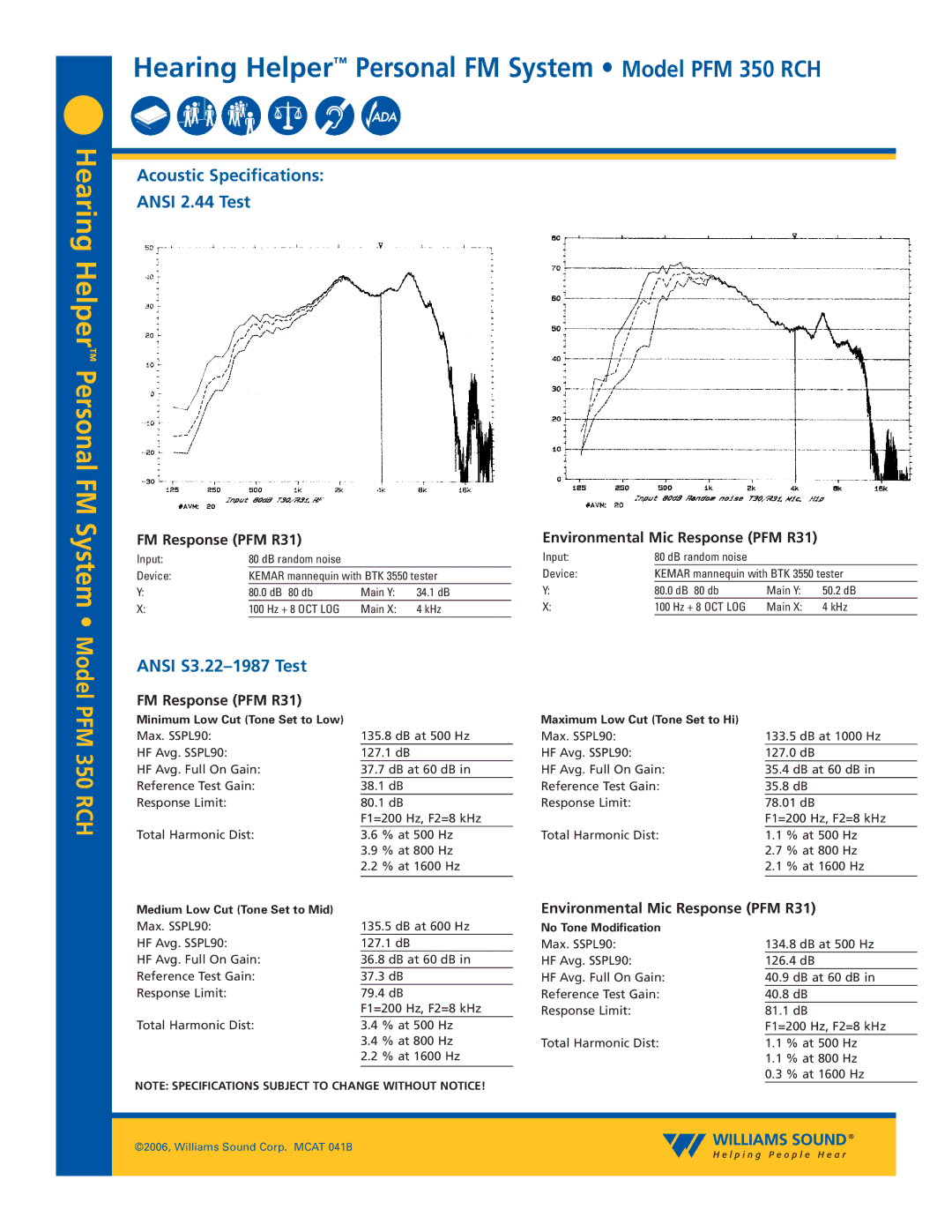PFM 350 RCH specifications
The Williams Sound PFM 350 RCH is a cutting-edge assistive listening device designed to enhance audio clarity for users in various environments, such as classrooms, auditoriums, and public venues. This device is particularly beneficial for individuals with hearing loss, allowing them to engage more fully in conversations, presentations, or performances.One of the standout features of the PFM 350 RCH is its robust frequency response, which ranges from 40 Hz to 18 kHz. This broad spectrum ensures that users experience rich sound quality with minimal distortion, providing a more natural listening experience. The device incorporates a 32-channel receiver, allowing users to select from multiple frequency channels, thus minimizing interference from other wireless devices operating in the vicinity.
The PFM 350 RCH utilizes the latest FM transmission technology, which provides a reliable and clear audio signal even in challenging environments. It operates within the 72-76 MHz frequency range, a band designated for assistive listening devices, which ensures compliance with regulatory standards and compatibility with various systems. Additionally, the device features a wide range of operating distances, making it suitable for both small and large venues.
An important aspect of the PFM 350 RCH is its user-friendly design. The lightweight build makes it easy to wear for extended periods, and the adjustable volume control allows users to customize their experience to suit individual needs. The device also boasts a long battery life, with the capacity to operate for up to 40 hours on a single charge, ensuring it is always ready for use.
Moreover, the PFM 350 RCH integrates seamlessly with headphones and neck loops, enhancing accessibility for a diverse range of users. Its compatibility with various audio sources broadens its application across different settings, including educational institutions, theaters, and places of worship.
In terms of build quality, the PFM 350 RCH is designed to be both durable and portable, making it suitable for frequent use. Its ergonomic design means it can be easily transported and stored, facilitating ease of access for both users and facilitators.
In conclusion, the Williams Sound PFM 350 RCH stands out as an advanced solution for anyone seeking to improve their auditory experience in various environments. With a combination of high-quality sound, user-friendly features, and versatile application, it effectively meets the needs of individuals with hearing challenges, ultimately promoting inclusion and engagement in societal activities.

